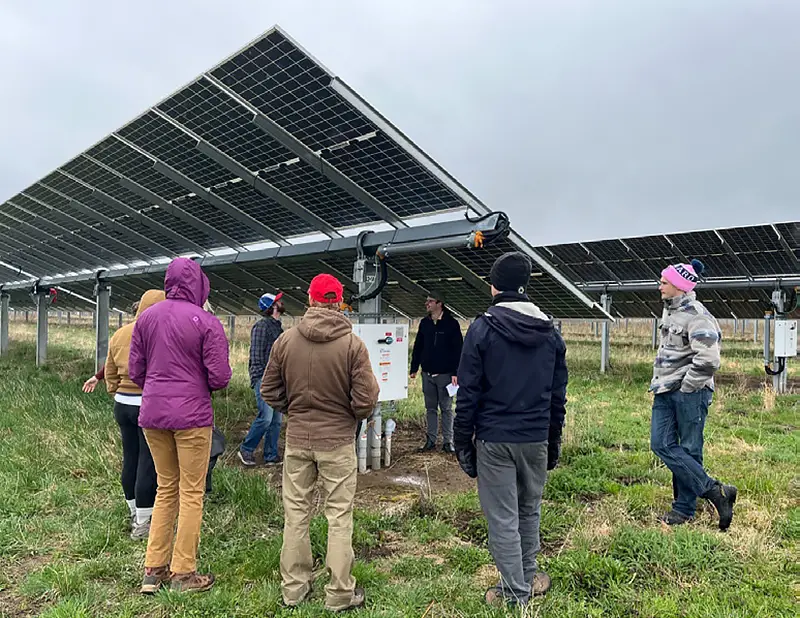The University of Wisconsin–Madison is working with Alliant Energy to develop a 2.25-megawatt solar array at the UW–Madison Kegonsa Research Campus to function as a site for solar and agricultural research that is directly applicable to Wisconsin. The pilot project will be a living and learning laboratory to further conversations about win-win opportunities to pair renewable energy and agricultural and ecosystem services research.
An informal community of practice (known as BadgerVoltaics) has assembled around this project, with more than 130 faculty, staff, and students exploring interdisciplinary collaboration for research, education, and community building within the nexus of food, energy, water, people and planet. The team gratefully acknowledges funding from the Climate Solutions for Health Lab.
What are agrivoltaics? Agrivoltaic systems combine solar energy generation and agriculture on the same land. In the case of our pilot study, solar energy could also be combined with horticulture, restorative ecology, or other land uses.

Dual use of land at agrivoltaic sites can benefit planetary health by establishing pollinator habitats, creating natural buffers to reduce water run-off and soil erosion, and increasing the population and diversity of native species in the area, among others.
Pollinators support agricultural production for many healthy foods, such as fruits, vegetables, nuts, and legumes, that provide key nutrients and protect against noncommunicable disease. The U.S. Department of Agriculture (USDA) estimates that the pollinator population has declined by more than 80 percent since 2007. Since that time, lack of pollinators has resulted in significant crop losses each year.
Research at the solar and agriculture pilot project will prioritize restoration and conservation of native pollinator and grazer species that can thrive near solar arrays. Findings from this research will contribute to a greater understanding of how agrivoltaics may contribute to an overall program to improve pollinator populations.
For example, a researcher will assess pollinator and overall insect population dynamics by surveying the site and tracking the abundance of species across the terrain throughout the solar array over time.
To assess the fitness and health of pollinators, the research team plans to implement a “bee hotel,” complete with cameras and automated imaging. Bee hotels are artificial nesting resources for bees and a useful tool to look at population dynamics, including nesting and foraging behavior, over time. Research is under way now; the solar project is currently under construction and expected to be energized in early 2025.
Please contact us for more information about our research.
Author Affiliations
- Josh Arnold, UW–Madison Office of Sustainability campus energy advisor, arnold@wisc.edu
- Mridula Menon, UW–Madison Department of Planning and Landscape Architecture graduate student, mmenon4@wisc.edu
- Victoria Salerno, UW–Madison Department of Entomology graduate student, vasalerno@wisc.edu
- Jonathan Patz, UW–Madison Vilas Distinguished Achievement Professor and the John P. Holton Endowed Chair of Health and the Environment, patz@wisc.edu